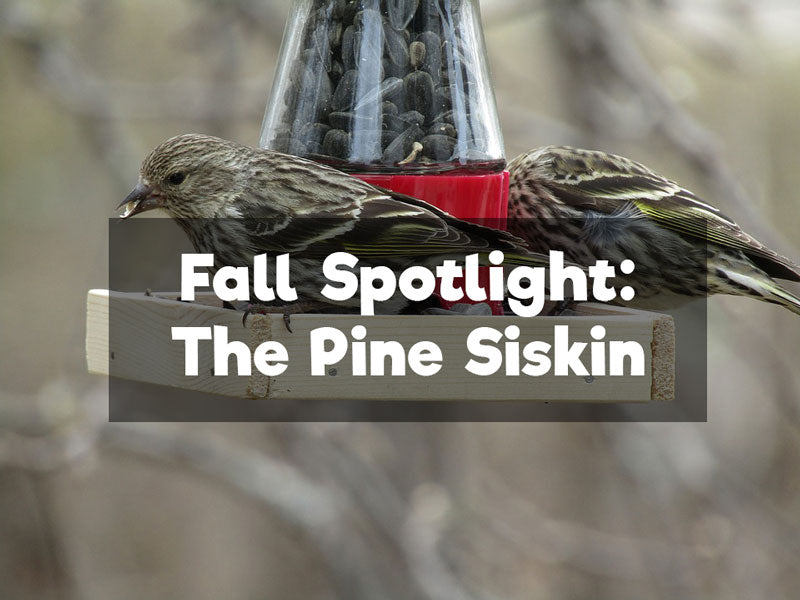Offer
Provide additional details about the offer you're running.
Provide additional details about the offer you're running.
Provide additional details about the offer you're running.

Keeping with our October focus on finch species, this week we’ll be talking about the often-gregarious pine siskin. Usually traveling in packs and whistling and singing about, these wonderful finches are the perfect fit for any backyard during the winter months and this year should be no exception to that rule.
As we have mentioned, expect an eruption of finch species this winter here in the Ottawa area and in addition to the influx of redpolls, as we touched on last week, pine siskins are expected to show up in great numbers – in fact, some already have!
With sightings pouring in from around Ottawa and the Valley, we’d thought it be the perfect opportunity to chat a little bit more about these wonderful birds, how to offer them seed and how best to identify them once they arrive in your yard over the coming weeks (if they already haven’t!).
Identification
Much the same as many members of the finch family, these are small songbirds of about the same size as many of the sparrow species we are treated to here in our area. They are equipped with the quintessential short and stout bill used for cracking seed but it should be noted that the bill of the pine siskin is a slightly smaller version that is what is common among other finch species.
When it comes to plumage, these birds can be extremely streaky but sport brilliant flashes of yellow throughout their otherwise pale plumage and is often best noticed as they take flight from your feeder or a nearby tree limb.
Where to Find Pine Siskins
A bird of the north, these birds, much like other finch species spend most of their lives in northern locales. When seed and cone crops diminish, they will head south in search of reliable food sources. As stated in this year’s finch forecast, seed and cone crops up north are in short supply and are one of the main reasons we have already begun to see these birds on feeders here in our area.
Naturally speaking, these birds love open deciduous forests where their opportunistic tendencies lead them to open fields, backyards, and gardens in search of seeds. When it comes to food, they particularly enjoy thistle and nyjer seed, so be sure to keep those feeders clean and filled throughout the season for the best possible viewing opportunities.
Vocals
The call of the pine siskin is an unmistakable trill lasting about one second in length and often accompanied by other short bursts of calls. They will however also mix these calls into their song, which is much more nasally in sound than many other finch species and can last up to 13 seconds in length.
The song of adult male pine siskins are a constant work in progress and they will continue to add variations and different songs to their repertoires throughout their adult lives.
High Quality Blend